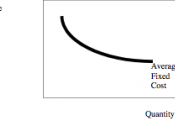There are some spelling mistakes in this one. That's why the C. Spelling
Steiner's Model
Steiner's model on programming preferences and broadcasting choices tries to show how stations come to the conclusion of what programming to show. This model goes on the assumption that broadcasters will go after the largest audience possible.
Going on the information given about this hypothetical situation, we can predict what each of the four stations in this market will show.
There are three distinct audience preferences. The first groups of 1200 viewers has a first programming preference of sitcoms and a second choice of soaps. The second group numbers 900 viewers and would pick cops first and soaps second. The third group, 500 viewers, likes soaps first and sitcoms and their second choice.
This model says that the audience will watch their first choice first and then the second choice, but only is their first choice is not available.
Let's say that the Federal Communications Commission licenses station A in their market. Looking at the viewer preferences, station A would start to broadcast soaps. By show soaps, it would capture a market of 2600 viewers. All viewers would watch because soaps is their first choice or it is their second choice but their first is not available.
The FCC then offers a license to station B. After examining the audience sizes, stations B also starts to show soaps. By programming to this audience, it splits the soaps market with station A and both of them have 1300 viewers.
Station B does not pick another programming because no other choice can offer more than 1300 viewers.
When the FCC offers a license to station C, things will definitely change in this market. Station C sees the biggest audience available is the sitcom market with 1200 viewers.



Film school......
Pity there's no bibliography. This essay reminds me of my first year at Film School, where we learnt about target audiences and the Magic Bullet Theory (v. interesting for researching this topic).
1 out of 1 people found this comment useful.